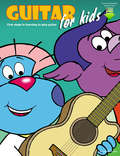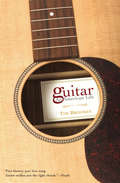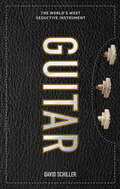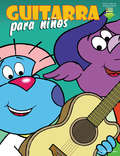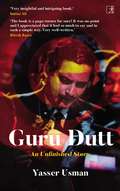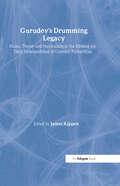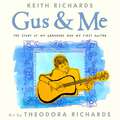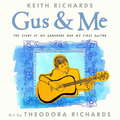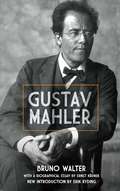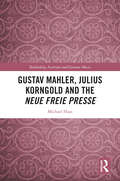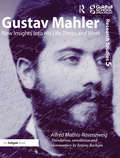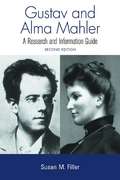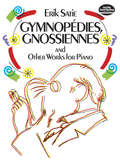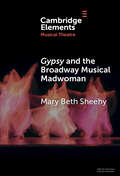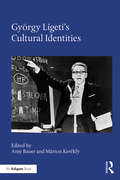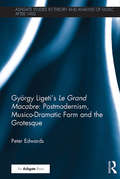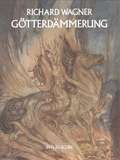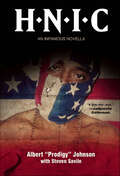- Table View
- List View
Guitar Zero: The Science of Becoming Musical at Any Age
by Gary MarcusOn the eve of his 40th birthday, Gary Marcus, a renowned scientist with no discernible musical talent, learns to play the guitar and investigates how anyone--of any age --can become musical. Do you have to be born musical to become musical? Do you have to start at the age of six? Using the tools of his day job as a cognitive psychologist, Gary Marcus becomes his own guinea pig as he takes up the guitar. In a powerful and incisive look at how both children and adults become musical, Guitar Zero traces Marcus's journey, what he learned, and how anyone else can learn, too. A groundbreaking peek into the origins of music in the human brain, this musical journey is also an empowering tale of the mind's enduring plasticity. Marcus investigates the most effective ways to train body and brain to learn to play an instrument, in a quest that takes him from Suzuki classes to guitar gods. From deliberate and efficient practicing techniques to finding the right music teacher, Marcus translates his own experience--as well as reflections from world-renowned musicians--into practical advice for anyone hoping to become musical, or to learn a new skill.Guitar Zero debunks the popular theory of an innate musical instinct while simultaneously challenging the idea that talent is only a myth. While standing the science of music on its head, Marcus brings new insight into humankind's most basic question: what counts as a life well lived? Does one have to become the next Jimi Hendrix to make a passionate pursuit worthwhile, or can the journey itself bring the brain lasting satisfaction?For all those who have ever set out to play an instrument--or wish that they could--Guitar Zero is an inspiring and fascinating look at the pursuit of music, the mechanics of the mind, and the surprising rewards that come from following one's dreams.
Guitar for Kids: First Steps in Learning to Play Guitar with Audio & Video
by Gareth Evans“Gareth has written a really well thought out first book for teaching young children how to play. This one is definitely the one I'll be using.” Bob Lucas - Bob Lucas Guitar Studios (Missouri US)Guitar For Kids is a fun all-colour guide on the first steps of learning to play Guitar with over 70 photographic examples, purpose-made diagrams and cartoons. Starting with advice on buying your first guitar, how to hold the guitar and how to tune it, the music then begins with easy-to-play melodies using only open strings (open strings means only the plucking hand is used), before moving to simple pieces in which the fretting hand is also used. The book goes into detail for some basic techniques because you're better off getting it right from the start rather than develop bad habits.Tablature Based - Guitar for Kids uses mostly guitar tablature making this popular instrument more easily accessible for beginners (as do most adult guitar method books). The rhythmical aspect of Sight-reading is covered within the Chords section which eases-in the later Sight-reading section because the only new thing to learn will be reading different notes from the musical staff.Audio Tracks - Guitar for Kids comes with 47 downloadable audio tracks with musical pieces in styles such as Rock, Blues, Pop, Flamenco, Jazz and Reggae. Each piece has a full band demo track and accompanying backing track with guitar part removed for you to play over.What Else? - EZ chords are covered (easy chords with less notes) and are accompanied with diagrams of the full versions for later on, or if you feel like a challenge. There’s an introduction to Power chords with Rock pieces to play named after healthy greens “Broccolli Rockilly” and “Rocket Salad”. There's a Blues and Rock duet with backing band tracks to play with a friend, and at the end there is a Quiz, no cheating!Grab a copy today!Please Note: The eBook includes musical pieces so is not suitable for smaller screens.“I looked through Guitar for Kids thoroughly when I received it and I think its great. I will be recommending that my students buy one.” Chris Nastri, Bachelor of Education (B.Ed) Phoenix Arizona US"It looks like Gareth spent a lot of time writing Guitar for Kids. I think the illustrations are very helpful in keeping people's minds interested and engaged." Tim Woosley - Music Director, Lincoln School of Music (Nebraska)
Guitar: An American Life
by Tim BrookesFrom humble folk instrument to American icon, the story of the guitar is told in this “exceptionally well-written” memoir by the NPR commentator (Guitar Player). In this blend of personal memoir and cultural history, National Public Radio commentator Tim Brookes narrates the long and winding history of the guitar in the United States as he recounts his own quest to build the perfect instrument. Pairing up with a master artisan from the Green Mountains of Vermont, Brookes learns how a perfect piece of cherry wood is hued, dovetailed, and worked on with saws, rasps, and files. He also discovers how the guitar first arrived in America with the conquistadors before being taken up by an extraordinary variety of hands: miners and society ladies, lumberjacks and presidents’ wives. In time, the guitar became America’s vehicle of self-expression. Nearly every immigrant group has appropriated it to tell their story. “Part history, part love song, Guitar strikes just the right chords.” —Andrew Abrahams, People
Guitar: The World's Most Seductive Instrument
by David SchillerCelebrate the significance, the magic, and the mojo of the world’s most seductive instrument. An obsessive, full-color book presented in an irresistible slipcase, Guitar features 200 instruments in stunning detail. Here are icons, like Prince’s Yellow Cloud, Willie Nelson’s “Trigger,” Muddy Water’s Thunderbird, and “Rocky,” lovingly hand-painted by its owner, George Harrison. Historic instruments—Fender’s Broadcaster, Les Paul’s “Log,” the Gibson Nick Lucas Special, the very first artist model. Hand-carved archtops, pinnacles of the luthier’s art, from John D’Angelico to Ken Parker. Stunning acoustics from a new wave of women builders, like Rosie Heydenrych of England, who’s known to use 5,000-year-old wood retrieved from a peat bog. And quirky one-of-a-kind guitars, like Linda Manzer’s Pikasso II—four necks, 42 strings, and a thousand pounds of pressure. Marrying pure visual pleasure with layers of information, Guitar is a glorious gift for every guitar-lover
Guitarra para niños: Primeros pasos para aprender a tocar la guitarra con audio y vídeo
by Gareth EvansGuitarra para niños es una guía divertida de los primeros pasos para aprender a tocar la guitarra con más de 70 ejemplos fotográficos, diagramas específicos y dibujos animados. Comenzando con consejos sobre la compra de tu primera guitarra, cómo sostener la guitarra y cómo afinarla, la música comienza con melodías fáciles de tocar usando sólo cuerdas abiertas (cuerdas abiertas significa que sólo se usa la mano que pulsa las cuerdas), antes de pasar a piezas sencillas en las que también se usa la mano que pulsa. El libro explica detalladamente algunas técnicas básicas porque es mejor hacerlo bien desde el principio en lugar de desarrollar malos hábitos. Basado en tablaturas - Guitarra para niños usa mayormente tablaturas de guitarra haciendo este instrumento popular más accesible para los principiantes (como lo hacen la mayoría de los métodos de guitarra para adultos). El aspecto rítmico de la lectura musical está cubierto en la sección de acordes, lo que facilita el proceso cuando llega la sección de la lectura musical completa, porque entonces lo único nuevo para aprender será leer las notas del pentagrama musical. Pistas de audio - Guitarra para niños viene con 47 pistas de audio descargables con piezas musicales en estilos como rock, blues, pop, flamenco, jazz y reggae. Cada pieza tiene una pista de demostración de la banda y una pista de acompañamiento con la parte de la guitarra eliminada para que la toques. ¿Qué más? - Los acordes fáciles están cubiertos y se acompañan con diagramas de las versiones completas para más tarde, o si te gustan los desafíos. Hay una introducción a los acordes de potencia con piezas de rock para tocar. Hay un dúo de blues y rock con temas de banda de acompañamiento para tocar con un amigo, y al final hay un cuestionario, ¡sin trampas! Nota: El libro electrónico incluye piezas musicales por lo tanto no es adecuado para pantallas pequeñas.
Guru Dutt: An Unfinished Story
by Mr. Yasser UsmanGuru Dutt&’s filmography has some names which have long been considered as some of the best films to have ever been made in India. His masterpiece Pyaasa (1957) was featured in TIME magazine's All-Time 100 Movies list in 2005. His films are still celebrated and revered by viewers, critics and students of cinema the world over, not only for their technical brilliance but also for the eternal romanticism and their profound take on the emptiness of life and the shallowness of material success. He was Indian cinema&’s Don Juan and Nietzsche rolled into one. But while much has been said and written on the film-maker and his art, little is known about his life behind the screens. This richly layered account takes a deep dive into the journey of a lonesome, troubled genius who was endlessly being pulled in contrary directions throughout his life. A child prodigy, who actually began as a dancer learning from the great Uday Shankar, an unconventional film-maker who desired commercial success without ever compromising on artistic satisfaction, a self-made entrepreneur who hated numbers yet single-handedly ran a film studio juggling the roles of a producer, director, actor, financier — all this while struggling silently with a deeply troubled personal life, at the centre of which was his tumultuous marriage with Geeta Dutt. Guru had it all — love, family, money, fame and validation from his audience. His untimely death by suicide, that too after multiple failed attempts, had shocked the entire film industry. But what led to that fateful night when he tipped his hat and said his final goodbye? Best-selling Bollywood biographer Yasser Usman explores the man and the myth Guru Dutt in this definitive biography of a nonconformist star, uncovering the extraordinary lives of the rich and the famous as well the incredible toll it takes on the emotional and mental health of a human being. With cameos from close friends and colleagues Dev Anand, Waheeda Rehman, Johnny Walker, S.D. Burman and most significantly Dutt&’s sister, noted painter Lalitha Lajmi, a short but compassionate, ambitious and ultimately tragic life reveals itself in the pages of this book. This is a gripping, meticulously researched and moving portrait of an unfinished life — a tale of unrequited love, unresolved relationships and unmatched cinematic talent.
Gurudev's Drumming Legacy: Music, Theory and Nationalism in the Mrdang aur Tabla Vadanpaddhati of Gurudev Patwardhan (Soas Studies In Music Ser.)
by James KippenThe 1903 Mrdang aur Tabla Vadanpaddhati is a revelatory text that has never been translated or analysed. It is a manual for playing the two most important drums of North Indian (Hindustani) music, the pakhavaj (mrdang) and the tabla. Owing to its relative obscurity, it is a source that has never been discussed in the literature on Hindustani music. Its author, Gurudev Patwardhan, was Vice Principal of V.D. Paluskar's first music school in Lahore from its inception in 1901 to 1908. Professor James Kippen provides the first translation of this immensely important text and examines its startling implications for rhythmic and metric theory. It is the earliest work on Indian drumming to contain a notation sufficiently precise to allow definitive reconstruction. The compositions are of considerable musical interest, for they can be readily realized on the tabla or pakhavaj. Kippen sets the work and objectives of the original author in the context of a rich historical, social and political background. By also discussing radical differences in the second edition of 1938, published by Gurudev's nephew, the vocalist Vinayakrao Patwardhan, Kippen illuminates the process by which 'tabla theory' was being created in the early 20th century. Both Patwardhans were enthusiastic supporters of Paluskar's nationalist imperatives, and active participants in his drive to institutionalize music, codify and publish notations of it, and promote a modern, Hindu vision of India wherein its identity could once again be linked to a glorious golden age in distant antiquity.
Gus & Me
by Keith Richards Theodora RichardsLong before there was a band, there was a boy: a young Keith Richards, who was introduced to the joy of music through his beloved granddad, Theodore Augustus Dupree, affectionately known as "Gus," who was in a jazz big band and is the namesake of Keith's daughter, Theodora Dupree Richards. Gus & Me offers a rare and intimate look into the childhood of the legendary Keith Richards through this poignant and inspiring story that is lovingly illustrated with Theodora Richards's exquisite pen-and-ink collages. This unique autobiographical picture book honors the special bond between a grandfather and grandson and celebrates the artistic talents of the Richards family through the generations. It also includes selected photographs from the Richards family collection and Read-Aloud functionality where available.
Gus and Me: The Story Of My Granddad And My First Guitar
by Keith RichardsKeith's grandfather, Theodore Augustus Dupree lived near Seven Sisters Road, in a house filled with instruments and cakes. A nostalgic look back at happy childhood days as the Rolling Stone star remembers his grandfather - a former big band player who encouraged his grandson to take up the guitar, in this charming picture book whimsically illustrated by Keith Richards' daughter.
Gus and Me: The Story Of My Granddad And My First Guitar
by Keith RichardsKeith's grandfather, Theodore Augustus Dupree lived near Seven Sisters Road, in a house filled with instruments and cakes. A nostalgic look back at happy childhood days as the Rolling Stone star remembers his grandfather - a former big band player who encouraged his grandson to take up the guitar, in this charming picture book whimsically illustrated by Keith Richards' daughter.
Gustav Holst: A Research and Information Guide (Routledge Music Bibliographies)
by Mary Christison HuismannFirst published in 2011. Routledge is an imprint of Taylor & Francis, an informa company.
Gustav Mahler (Studies Of Composers #Vol. 8)
by Erik Ryding Ernst Krenek James Galston Bruno WalterConductor, composer, and writer Bruno Walter (1876-1962) worked closely with Gustav Mahler as the composer's assistant and protégé. His revealing recollections of Mahler were written in 1936, marking the twenty-fifth anniversary of the composer's death. Walter first encountered Mahler more than 40 years earlier, when he served as the composer's assistant conductor in Hamburg. He worked with Mahler again at the Vienna Opera, and after the composer's death conducted the debut of the Ninth Symphony and Das Lied von der Erde. A staunch supporter of Mahler's genius and defender of his dour personality, Bruno cites the pressures faced by a gifted artist striving for perfection. This edition of his tribute to his friend and mentor features supplemental materials that include a biographical sketch of Mahler as man and artist by Ernst Křenek, the composer's son-in-law and musical heir, and a new Introduction by Erik Ryding, author of Bruno Walter: A World Elsewhere.
Gustav Mahler, Julius Korngold and the Neue Freie Presse (Rethinking Austrian and German Music)
by Michael HaasJulius Korngold, critic at the highly influential newspaper Neue Freie Presse, was close to and supportive of Gustav Mahler and, for the first time, essays on the man and his music are made available in English. Those on his time at Vienna’s Imperial Opera are extensive and well informed.Both Korngold and Mahler shared a common Moravian Jewish background, born in 1860 and both students of Anton Bruckner. The paper was Jewish owned, and Theodor Herzl, the founder of the Zionist movement, was its cultural editor and Korngold’s employer. Claims that Mahler was driven out of Vienna by an antisemitic press are shown to be wrong, given Mahler’s support by the most powerful critic of the day writing in the Empire’s most influential newspaper. Importantly, the essays also reveal a world of Modernism that includes Mahler’s innovations at the opera, and Modernism in music before departures from tonality. Mahler was claimed by Arnold Schoenberg as his musical hero, firmly placing him in the Modernist camp. Yet Korngold was universally seen as an archconservative and his relationship with Mahler was personal and his understanding profound. The book addresses the question of “Mahler, the first Modernist or the last Romantic?”.The book will be invaluable for Mahler enthusiasts, musicians, musicologists as well as cultural historians.
Gustav Mahler: New Insights into His Life, Times and Work
by Alfred Mathis-RosenzweigAlfred Mathis-Rosenzweig (1897-1948) was a Viennese musicologist and critic who studied at the universities of Budapest and Vienna. From 1933 he embarked on producing a large-scale study of Mahler but at the time of his death the manuscript was left unfinished. Although it was presumed lost until 1997, the unfinished typescript, written in German, had been deposited in the library of the Guildhall School of Music & Drama. In 2003, the School‘s Research Centre commissioned Jeremy Barham to prepare the first published edition of this important work, and his annotations and commentary add invaluable material to his translation of this historic document. Biographical material is used as a loose framework and platform for Mathis-Rosenzweig‘s profound examination of the environment within which Mahler‘s earlier music was embedded. This is an environment in which Wagner, Bruckner and Wolf feature prominently, and in which Mahler‘s music is viewed from the wider perspective of nineteenth-century German cultural domination and the subsequent rise of political extremism in the form of Hitlerite fascism.
Gustav Mahler’s Symphonic Landscapes
by Thomas PeattieIn this study Thomas Peattie offers a new account of Mahler's symphonies by considering the composer's reinvention of the genre in light of his career as a conductor and more broadly in terms of his sustained engagement with the musical, theatrical, and aesthetic traditions of the Austrian fin de siècle. Drawing on the ideas of landscape, mobility, and theatricality, Peattie creates a richly interdisciplinary framework that reveals the uniqueness of Mahler's symphonic idiom and its radical attitude toward the presentation and ordering of musical events. The book goes on to identify a fundamental tension between the music's episodic nature and its often-noted narrative impulse and suggests that Mahler's symphonic dramaturgy can be understood as a form of abstract theatre.
Gustav and Alma Mahler: A Research and Information Guide (Routledge Music Bibliographies)
by Susan M. FillerThis revised edition of Garland's 1989 publication updates the core bibliography on Gustave Mahler (as well as his spouse and fellow composer Alma Mahler) by incorporating new research gathered over the past dozen years on his life and professional works. Gustave Mahler, renowned conductor and composer of symphonies and song cycles, is one of the foremost musical figures of the late nineteenth and early twentieth centuries. His symphonies continue to be widely performed and studied through the twenty-first century. Organized in sections according to subject matter, references are arranged alphabetically by the names of authors or editors. Filler’s research has produced sources for musicologists and students in nineteen languages, offering a resource that expands traditional English-language music scholarship.
Gymnopédies, Gnossiennes and Other Works for Piano (Dover Music For Piano Ser.)
by Erik SatieIn his piano works especially, Erik Satie (1866–1925) was a witty musical caricaturist. The eccentric French composer loved to satirize academic rules in general and the impressionistic titles of Debussy's compositions in particular, giving his own works such surrealistic names as Pieces in Pear Form and Dried Embryos, and annotating them with equally bizarre musical directions: "Tres 'neuf heures du matin" (Very "nine in the morning"), "Corpulentus" (Corpulent), and so on. His comic spirit is equally embodied in the music itself, as this delightful selection of seventeen piano works amply proves. They are as spare, lively, and capricious as they are hauntingly melodic. In addition to the well-known Gymnopédies and Gnossiennes, the pieces reproduced here include Sarabandes, Pièces froides, Poudre d'or, En habit de cheval, Morceaux en forme de poire, Embryons desséchés, Aperçus désagreables, Descriptions automatiques, and more.This volume, the largest collection of Satie's piano works yet published, has been reprinted on fine-quality paper from authoritative original editions, and sturdily bound to provide you a lifetime of study and enjoyment. In its pages are some of the most original and appealing achievements of a turbulent era in music, compositions that influenced such modern masters as Ravel, Milhaud, and Poulenc.
Gypsy and the Broadway Musical Madwoman: A Feminist Analysis (Elements in Musical Theatre)
by Mary Beth SheehyGypsy, the groundbreaking 1959 Broadway musical by Jule Styne, Stephen Sondheim, and Arthur Laurents, introduced the world of musical theater to one of the most formidable female characters ever to strut onto the stage: Madam (Momma) Rose. She embodies the archetypal “stage mother” whose lifelong journey to achieve fame, enacted vicariously through her daughters and their vagabond life across America, drives her to a “madness” akin to that of the quintessential operatic madwoman. Her famous mad scene, “Rose's Turn,” demonstrates the many analytical possibilities intrinsic to this character definition. The creators of Gypsy's Rose thus showcased the “Broadway musical madwoman” type: a female character who, like her foremother the operatic madwoman, is rife with gendered complexity that creates a fascinating opportunity for feminist analytical study. This Element's two-pronged approach uses the frameworks of feminist theory and musicological analysis to consider the importance, legacy, and reception of Rose's journey.
György Ligeti's Cultural Identities
by Amy Bauer Márton KerékfySince György Ligeti’s death in 2006, there has been a growing acknowledgement of how central he was to the late twentieth-century cultural landscape. This collection is the first book devoted to exploring the composer’s life and music within the context of his East European roots, revealing his dual identities as both Hungarian national and cosmopolitan modernist. Contributors explore the artistic and socio-cultural contexts of Ligeti’s early works, including composition and music theory, the influence of East European folk music, notions of home and identity, his ambivalent attitude to his Hungarian past and his references to his homeland in his later music. Many of the valuable insights offered profit from new research undertaken at the Paul Sacher Foundation, Basel, while also drawing on the knowledge of long-time associates such as the composer’s assistant, Louise Duchesneau. The contributions as a whole reveal Ligeti’s thoroughly cosmopolitan milieu and values, and illuminate why his music continues to inspire new generations of performers, composers and listeners.
György Ligeti's Le Grand Macabre: Postmodernism, Musico-Dramatic Form and the Grotesque (Ashgate Studies in Theory and Analysis of Music After 1900)
by Peter EdwardsGyörgy Ligeti’s Le Grand Macabre (1974–77, revised 1996) has consolidated its position as one of the major operatic works of the twentieth century. Few operas composed since the 1970s have received such numerous productions, bringing the eclectic score to a global audience. Famously dubbed by Ligeti as an ‘anti-anti-opera’, the piece is a highly ambiguous, apocalyptic fable about the human condition, fear of death and the final judgement. As the first book in English solely dedicated to discussion of this work, György Ligeti’s Le Grand Macabre: Postmodernism, Musico-Dramatic Form and the Grotesque offers new perspectives on the opera’s musico-dramatic identity in the context of musical postmodernism. Peter Edwards draws on a range of modernist and postmodernist theories to explore the collision of past styles and genre models in the opera, its expressive states and its engagement with the grotesque. This is ably supported by musical analysis and extensive study of Ligeti’s sketch materials held at the Paul Sacher Foundation in Basel. Edwards’s analyses culminate in a new approach to examining the opera’s rich multiplicities, the composition of the musical material and the nature of Ligeti’s relationship with the musical past. This is a key reference work in the fields of musical modernism and postmodernism, opera studies and the music of Ligeti.
Götterdämmerung in Full Score
by Richard WagnerMelding literary, philosophical, and political -- as well as musical -- influences in his works, Richard Wagner (1813-83) brought the expressive power of German romantic opera to new heights -- indeed, his music was its crowning glory. George Bernard Shaw, a critic not given to hyperbole, acknowledged Wagner's preeminent status in The Perfect Wagnerite: "He was the summit of the nineteenth-century school of dramatic music."In Der Ring des Nibelungen, Wagner drew on a medieval German epic, the Nibelungenlied, and Norse mythology to create a new synthesis of music and drama on the largest scale. Of the four works in the Ring cycle, Götterdämmerung is perhaps the grandest and most sweeping of all. Although it is the final work in the series, the opera was actually first sketched out by Wagner in 1848, under the title Siegfrieds Tod. As it turned out, dramaturgic difficulties forced the composer to expand the tragedy of Siegfried into the four-part Ring. In 1851 he amplified Siegfrieds Tod with Der junge Siegfried (later Siegfried), and the following year wrote the texts of Die Walküre and Das Rheingold. In effect, the text of the Ring cycle was written in reverse order.Wagner began composing the musical drafts of Götterdämmerung in 1869. Five years later, the work was complete -- the capstone of an epic masterpiece that aroused near-religious fervor among its devotees. Shaw opined of the Ring as a whole: "The musical fabric is enormously elaborate and gorgeous," while Grove's Dictionary offers this comment on the special appeal of Götterdämmerung: "It is in the epic and reflective passages of Götterdämmerung, the narratives and orchestral epic of the Funeral March, that there unfurls that 'associative magic' praised so highly by Thomas Mann."Götterdämmerung has never been available in the United States in full operatic score -- until now. Reprinted directly from the rare 1877 first edition, this is the score that Wagner himself approved with the instrumentation he intended. Except for the original title page, the German-language front matter has been omitted in this edition for reasons of space and replaced by an English translation.New admirers of Wagner, opera enthusiasts, and all music lovers can savor the full heroic impact of this majestic musical achievement in Dover's characteristically inexpensive, superbly produced edition.
H.N.I.C.: A Novella
by Steven Savile Albert "Prodigy" JohnsonProdigy, from the legendary hip-hop group Mobb Deep, launches Infamous Books with a story of loyalty, vengeance, and greed.“Simultaneously a fast-paced crime drama and an engrossing, unsentimental moral tale, H.N.I.C. peers into the dark heart that underpins the codes of loyalty and friendship, betrayal and vengeance.” —Brooklyn Daily EaglePappy tries to break out of the game before the head of his crew, Black, gets them all killed. Against his better judgment Pappy agrees to do one last job, but only because it’s the price of his freedom. He knows Black can’t be trusted. He knows his “brother” would rather see him dead than let him walk away. Yet he still agrees to do the job because Black isn’t the only one who can’t be trusted. Sometimes you have to kill for what you want.Further developing the stark realism and uncompromising streetwise narratives of his lyrics, H.N.I.C. cements Prodigy’s position as one of the foremost chroniclers of contemporary urban life. Simultaneously a fast-paced crime drama and an engrossing, unsentimental moral tale, H.N.I.C. peers into the dark heart that underpins the codes of loyalty and friendship, betrayal and vengeance.
HONK!: A Street Band Renaissance of Music and Activism
by Reebee Garofalo Erin T. Allen Andrew SnyderHONK! A Street Band Renaissance of Music and Activism explores a fast-growing and transnational movement of street bands—particularly brass and percussion ensembles—and examines how this exciting phenomenon mobilizes communities to reimagine public spaces, protest injustice, and assert their activism. Through the joy of participatory music making, HONK! bands foster active musical engagement in street protests while encouraging grassroots organization, representing a manifestation of cultural activity that exists at the intersections of community, activism, and music. This collection of twenty essays considers the parallels between the diversity of these movements and the diversity of the musical repertoire these bands play and share. In five parts, musicians, activists, and scholars voiced in various local contexts cover a range of themes and topics: History and Scope Repertoire, Pedagogy, and Performance Inclusion and Organization Festival Organization and Politics On the Front Lines of Protest The HONK! Festival of Activist Street Bands began in Somerville, Massachusetts in 2006 as an independent, non-commercial, street festival. It has since spread to four continents. HONK! A Street Band Renaissance of Music and Activism explores the phenomenon that inspires street bands and musicians to change the world and provide musical, social, and political alternatives in contemporary times.
Haight-Ashbury, Psychedelics, and the Birth of Acid Rock (Excelsior Editions)
by Robert J. CampbellCombining literature, social history, and personal experience, author Robert J. Campbell traces the birth, downfall, and legacy of the innovative, playful, and spontaneous counterculture launched in 1960s Haight-Ashbury. In a lively writing style, Campbell describes the discovery of LSD, its slow adoption, and the promotion of it by Timothy Leary and Ken Kesey, who each became missionaries for the drug. Campbell relates how LSD allowed users to enhance the perception of alternative realities and describes its wide-scale use in the Haight-Ashbury District of San Francisco from 1964 to 1967 that led to imaginative and creative change, including collaborative behavior, a new way of looking at the world, acid rock, and a host of other paradigm shifts. Haight-Ashbury, Psychedelics, and the Birth of Acid Rock concludes by examining the inherent dangers of constant drug use as well as the positive legacy of the 1960s, including a focus on health food, cooperative living arrangements, recycling, battling climate change, free medical help, and personal responsibility. The book incorporates ideas from a broad range of disciplines for general readers for a unique and fresh look at this impactful era.
Hail! Hail! Rock'n'roll: The Ultimate Guide to the Music, the Myths and the Madness
by John HarrisWant to learn how to play guitar in two pages? Ever wondered what goes into Marilyn Manson's backstage rider? Or who wrote the worst rhyming couplet in the history of rock? John Harris's Hail! Hail! Rock'n'Roll is the ultimate guide to what Spinal Tap called 'the majesty of rock, the mystery of roll'. Gloriously irreverent, it is also satisfyingly definitive, with a list of every Glastonbury line up; a dictionary of obscure genres from Alt.country to Shoegazing; a brutally honest guide to the Beatles' solo albums; the surprising wit and wisdom of Shaun Ryder and Noel Gallagher; Bob Dylan's collected thoughts on Christianity and Keith Richards' less-collected thoughts on drugs; and a handy flow chart that shows you how to listen to all of Captain Beefheart's albums without going insane.

